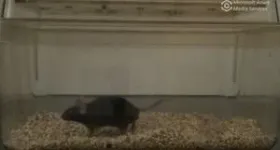(Press-News.org) Chocolate-flavored pills for children who hate taking medicine.
Several drugs combined into one daily pill for seniors who have trouble remembering to take their medications.
Drugs printed at your local pharmacy at personalized dosages that best suit your health needs.
These are just a few potential advantages of 3D drug printing, a new system for manufacturing drugs and treatments on-site at pharmacies, health care facilities and other remote locations.
In 2015, the Food and Drug Administration approved the first 3D-printed drug, Spritam (levetiracetam), for epilepsy. Several other manufacturers and drug companies are developing their own ones.
But the widespread adoption of 3D drug printing will require stringent quality control measures to ensure that people get the right medication and dosage. Even a tiny mismeasurement of a drug’s ingredient during the printing process could endanger a patient’s health.
In a new research paper, NIST research scientist Thomas P. Forbes assesses various approaches to ensuring that 3D drug printers work as designed. The journal article applies a “quality by design” analysis to evaluate the best procedures and protocols to ensure that 3D printers produce drugs at the correct dosages and with the correct mix of chemicals.
Though various methods exist for remotely printing drugs, Forbes focused on one of the most common: inkjet printers and similar systems that can print personalized medication on demand.
Like inkjet printers in homes, though larger, the printer has nozzles that deposit the drug’s liquified materials, or inks, into tiny wells on a tray or directly into capsules. Through freeze-drying and other processes, the liquid can be turned into a tablet or powder poured into a capsule. It can also be evaporated onto a thin film that dissolves in the mouth.
Forbes’ paper does not make any recommendations. Instead, his research identifies and tests several possible methods and techniques for maintaining quality control in 3D drug printing.
We spoke with Forbes about his research.
What are some of the advantages of 3D drug printing?
When your doctor writes a prescription, she knows drugs are available in certain dosages, and she’ll choose the dosage she thinks is best for you. Some drugs come in many sizes, while others come in just one.
3D printing enables you to individualize the dosage. You can do it based on the person's age, health, even their immune system or genetic profile.
You can also personalize the form that the medicine takes. Some patients may prefer a liquid to a capsule, for example. There’s also been research on polypills, which combine multiple pills into a single drug. And some scientists have focused on the benefits for children who don’t like to take their medicine. With 3D printing, you can create drugs shaped like starfishes or ones that taste like chocolate.
3D drug printing also has the huge potential to change vaccine distribution.
Yes, there’s a lot of interest in providing “point-of-care” locations where the vaccines would be printed near where they’re administered.
You’d still have a larger facility making the raw materials, but you could be much more agile and quicker in getting the vaccine to the public. This would be hugely helpful during another pandemic.
Your research focuses on quality control and measurements in 3D drug printing.
Yes, we will need to know that these 3D printers are working correctly. They need to print the correct dosages with the right ingredients. So, we will need on-site methods of taking and validating measurements. This is an area where NIST has a great deal of expertise.
In your journal article, you break down the quality control process step by step. Can you take us through that?
It starts with the delivery of the printing ink to the remote location. You need to confirm it hasn’t degraded, evaporated or been exposed to unusual temperatures. You want to confirm it’s still good.
We used a technique called ultraviolet-visible (UV-Vis) spectroscopy. There are now relatively inexpensive tabletop and even handheld UV-Vis spectrometers on the market. They work by shining ultraviolet and visible light through your sample. How the sample absorbs them tells you about its chemical composition.
Next, we looked at how you can verify your printer is working correctly. Many commercial printers have LEDs beneath the individual nozzles that print the ink for the drugs. Every time the nozzle releases a drop of ink, it breaks the flow of light, which is detected by a type of light detector known as a photodiode.
The photodiode will detect if the nozzle stops releasing liquid because you’ve run out of ink. If there’s a blockage in the nozzle or even a piece of dust causing irregularities in the flow of ink drops, that will also be detected. In our tests, we found the LEDs and photodiodes performed well.
What about confirming that you’ve printed the correct amount of the drug?
That’s tricky. You need a nondestructive way of confirming the correct dosage. We are working on this right now. It’s the next big step.
What’s the ultimate goal here?
We’d like to produce a series of voluntary protocols or recommendations for quality control and measurement accuracy in 3D drug printing. We will likely work collaboratively with other groups, such as American Society for Testing and Materials or United States Pharmacopeia, to release these.
If 3D drug printing becomes widely adopted, we want to be ready to support both industry and regulatory agencies with a measurement science foundation.
END
Your future medications could be personalized for you on a 3D printer
The National Institute of Standards and Technology is helping to develop standards and safety protocols that would allow pharmacies to print drugs onsite at a dosage best for you
2024-06-25
ELSE PRESS RELEASES FROM THIS DATE:
Study finds foreign-born CEOs likelier to acquire international targets, including in their birth country
2024-06-25
Toronto - New research shows that CEOs who have moved away from their country of origin have a significantly higher tendency to make acquisitions internationally, with a preference for targets in their birth country or in countries that once colonized it.
“Foreign-born CEOs are taking an increasing leadership role in the corporate world,” says researcher Ron Shalev, an associate professor of accounting at the University of Toronto Scarborough who is cross-appointed to U of T’s Rotman School of Management. “In our sample, 24 per ...
For better loan terms, find a partner
2024-06-25
Shoppers browsing through blouses and blenders at Target know they can also quaff a cappuccino at one of more than 1,700 Starbucks cafeshoused within Targets. The strategic alliance benefits both corporations by helping them reach new markets, boost their brands, and add incremental sales.
Collaborative partnerships such as this have grown at a pace of 3,600 per year, according to the SDC Platinum database. That’s partly because companies in alliances can gain access to new technologies and customers while keeping their autonomy.
New research from Texas McCombs highlights ...
How uncertainty builds anxiety
2024-06-25
Alfred Hitchcock observed that “There is no terror in the bang, only in the anticipation of it.” A common way to build suspense in a movie scene is for the audience to know something bad is going to happen, but not when it is going to happen. But how does uncertainty work to ratchet up our anxiety? In a recent paper in the journal Computational Psychiatry, researchers at the University of California, Davis, Department of Psychology take a deeper look into what builds fear.
Not knowing when something will happen can cause anxiety, but until ...
Adolescents today are more satisfied with being single
2024-06-25
Young people aged 14 to 20 years are nowadays more satisfied with being single than their counterparts ten years ago. This is the conclusion of a study undertaken by the Institute of Psychology at Johannes Gutenberg University Mainz (JGU). "It seems that today's adolescents are less inclined to pursue a romantic relationship. This could well be the reason for the increased singlehood satisfaction," said psychologist Dr. Tita Gonzalez Avilés, lead author of the recent study. Growing numbers of people are living as ...
Researchers discover new flat electronic bands, paving way for advanced quantum materials
2024-06-25
In a study published in Nature Communications June 19, a team of scientists led by Rice University’s Qimiao Si predicts the existence of flat electronic bands at the Fermi level, a finding that could enable new forms of quantum computing and electronic devices.
Quantum materials are governed by the rules of quantum mechanics, where electrons occupy unique energy states. These states form a ladder with the highest rung called the Fermi energy.
Electrons, being charged, repel each other and move in correlated ways. ...
Discovery of vast sex differences in cellular activity has major implications for disease treatment
2024-06-25
By Darrin S. Joy
“We discovered a pronounced ‘men are from Mars, women are from Venus’ pattern,” says marine and environmental biologist Suzanne Edmands.
She refers not to human psychology, but rather to mitochondria, the cell components responsible for generating energy.
Edmands, professor of biological sciences at the USC Dornsife College of Letter, Arts and Sciences, recently published research in the Proceedings of the National Academy of Sciences that reveals vast differences in gene activity within the mitochondria of males compared to females.
Although the study looks at tiny marine organisms called copepods, ...
nTIDE June 2024 Deeper Dive: Employment trends for people with disabilities highlight continued gains for those with vision impairments
2024-06-25
East Hanover, NJ – June 25, 2024 – The employment-to-population ratio for individuals with vision impairments continues to show marked improvement, according to data shared during the according to last Friday’s National Trends in Disability Employment (nTIDE) Deeper Dive Lunch & Learn Webinar. nTIDE is a joint effort by Kessler Foundation and the University of New Hampshire’s Institute on Disability (UNH-IOD).
Director of Research Arielle Silverman, PhD, and Research Specialist Sarahelizabeth Baghun, PhD, from the ...
WVU refining at-home sleep apnea detection device to help with more efficient diagnosis, treatment
2024-06-25
West Virginia University researchers will put a sleep apnea detection device at the fingertips or wrists of patients facilitating early diagnosis and treatment of the disease with support from a National Science Foundation grant.
Dr. Sunil Sharma, N. Leroy Lapp Professor and division chief of the Pulmonary, Critical Care and Sleep Medicine Fellowship Program in the WVU School of Medicine, received the award after working with other WVU researchers to develop prototypes and secure a patent.
“It’s about taking technology from the lab to the bedside,” Sharma said. ...
UC San Diego receives $5 million to support geriatrics workforce enhancement program
2024-06-25
The University of California San Diego has been selected for the third time to participate in the Geriatrics Workforce Enhancement Program (GWEP). This highly selective program comes with a $5 million grant from the Health Resources and Services Administration (HRSA). These funds will be used over the next five years to support the San Diego Imperial Geriatric Education Center (SDIGEC), which provides geriatric educational programming to health workers and other care providers across both San Diego and ...
Got prunes? Prunes may preserve bone density and strength in older women
2024-06-25
UNIVERSITY PARK, Pa. — Dairy isn’t the only food that’s good for bone health. Prunes may also protect bone structure and strength in postmenopausal women, according to a new study led by Penn State researchers. The findings, published in Osteoporosis International, suggest that daily prune consumption slows the progression of age-related bone loss and reduces the risk of fracture.
“This is the first randomized controlled trial to look at three-dimensional bone outcomes with respect to bone structure, geometry and estimated strength,” said Mary Jane ...
LAST 30 PRESS RELEASES:
First Editorial of 2026: Resisting AI slop
Joint ground- and space-based observations reveal Saturn-mass rogue planet
Inheritable genetic variant offers protection against blood cancer risk and progression
Pigs settled Pacific islands alongside early human voyagers
A Coral reef’s daily pulse reshapes microbes in surrounding waters
EAST Tokamak experiments exceed plasma density limit, offering new approach to fusion ignition
Groundbreaking discovery reveals Africa’s oldest cremation pyre and complex ritual practices
First breathing ‘lung-on-chip’ developed using genetically identical cells
How people moved pigs across the Pacific
Interaction of climate change and human activity and its impact on plant diversity in Qinghai-Tibet plateau
From addressing uncertainty to national strategy: an interpretation of Professor Lim Siong Guan’s views
Clinical trials on AI language model use in digestive healthcare
Scientists improve robotic visual–inertial trajectory localization accuracy using cross-modal interaction and selection techniques
Correlation between cancer cachexia and immune-related adverse events in HCC
Human adipose tissue: a new source for functional organoids
Metro lines double as freight highways during off-peak hours, Beijing study shows
Biomedical functions and applications of nanomaterials in tumor diagnosis and treatment: perspectives from ophthalmic oncology
3D imaging unveils how passivation improves perovskite solar cell performance
Enriching framework Al sites in 8-membered rings of Cu-SSZ-39 zeolite to enhance low-temperature ammonia selective catalytic reduction performance
AI-powered RNA drug development: a new frontier in therapeutics
Decoupling the HOR enhancement on PtRu: Dynamically matching interfacial water to reaction coordinates
Sulfur isn’t poisonous when it synergistically acts with phosphine in olefins hydroformylation
URI researchers uncover molecular mechanisms behind speciation in corals
Chitin based carbon aerogel offers a cleaner way to store thermal energy
Tracing hidden sources of nitrate pollution in rapidly changing rural urban landscapes
Viruses on plastic pollution may quietly accelerate the spread of antibiotic resistance
Three UH Rainbow Babies & Children’s faculty elected to prestigious American Pediatric Society
Tunnel resilience models unveiled to aid post-earthquake recovery
Satellite communication systems: the future of 5G/6G connectivity
Space computing power networks: a new frontier for satellite technologies
[Press-News.org] Your future medications could be personalized for you on a 3D printerThe National Institute of Standards and Technology is helping to develop standards and safety protocols that would allow pharmacies to print drugs onsite at a dosage best for you




